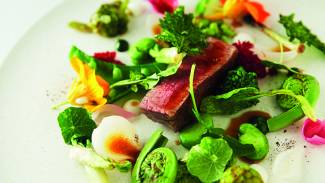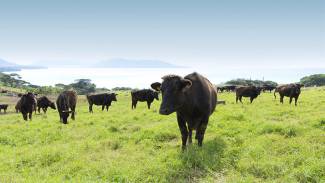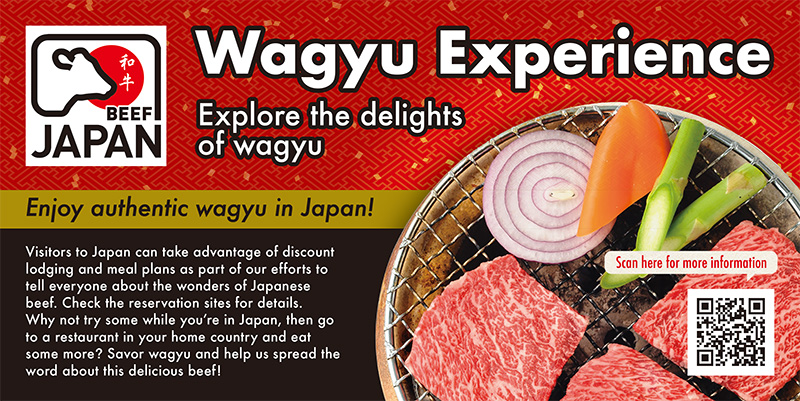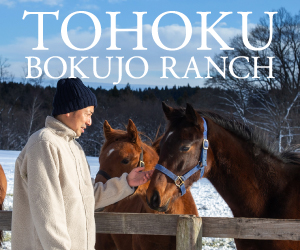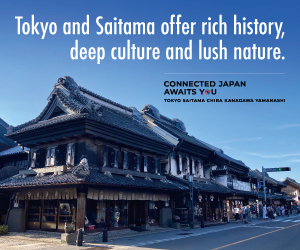WASHOKU
CONSUMPTION GUIDE FOR THE DISCERNING DINER
Visitors from all over the world can enjoy Japan’s wagyu cuisine at restaurants in major cities such as Tokyo and Osaka. One can pick and choose from a variety of richly flavored wagyu brands, such as Kobe beef from Hyogo Prefecture, Matsusaka beef from Mie Prefecture and Omi beef from Shiga Prefecture — to name just a few.
Many washoku dishes that use meat rely a lot on wagyu for its rich aroma and distinctive taste. Since wagyu is said to suit any style of cuisine, it is used for anything from steak to sukiyaki, shabu-shabu (hot pot), gyudon (beef bowl) and teppanyaki (meat, seafood or vegetables cooked on an iron grill).
Wagyu can be served in blocks as well as slices of various thickness and cooked in many ways to savor its taste. It can literally be enjoyed “from nose to tail,” with characteristics including taste and texture that vary significantly depending on the cuts, which range from sirloin, chuck roll, shoulder clod and short plate to rump, gooseneck round and tallow.
Among all wagyu dishes, sukiyaki and shabu-shabu seem to stand out and win praise worldwide. Sirloins or ribloins are recommended to make sukiyaki, whereas sliced chuck roll or top-round are recommended for shabu-shabu. The basic ingredients for sukiyaki are wagyu, beef tallow, leeks, onions and shungiku (chrysanthemum greens), which are simply cooked with just sugar, sake and soy sauce.
On the other hand, the ingredients for shabu-shabu include wagyu, kombu (kelp), shungiku, shiitake, shimeji mushrooms, carrots and firm tofu. These are seasoned with soy sauce, sugar and dashi before cooking.
To eat, the meat is then blanched in the pot piece by piece before dipping in either ponzu (Japanese citrus vinaigrette) sauce or sesame sauce.
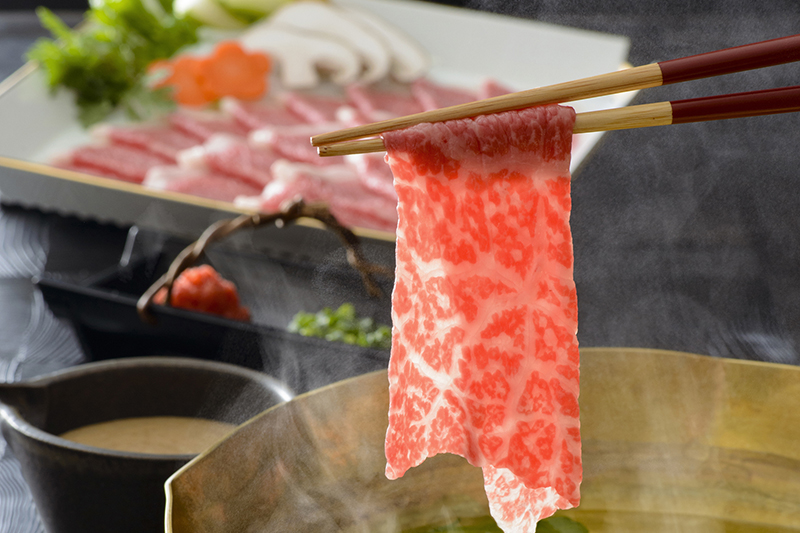
JAPAN LIVESTOCK PRODUCTS EXPORT PROMOTION COUNCIL
Secrets behind the flavor
The secret behind the beef’s exquisite flavor is said to be brought about by three elements: First, its aesthetic look featuring beautiful, highly detailed marbling and an extremely delicate texture. Second, fat content rich in oleic acid, providing a succulent flavor that fills the mouth as it melts. And third, the so-called “wagyu aroma” — a rich, sweet smell similar to that found in peaches and coconuts that spreads in the mouth when chewed.
This aroma comes out strongest when the meat is heated to 80 C (176 F), the same temperature best suited for sukiyaki. Also, since wagyu’s distinctive aroma doesn’t disappear even when chilled, the aroma and the mild texture of wagyu add to the high quality of its taste.
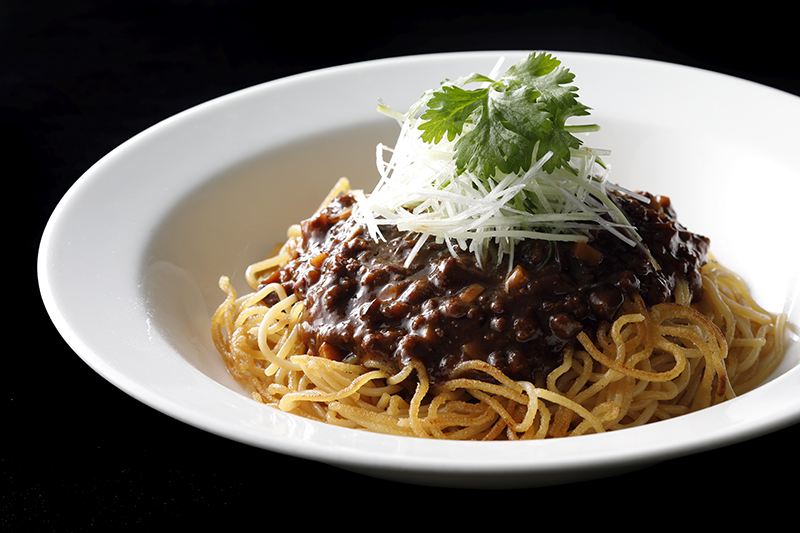
HOTEL NEW OTANI TOKYO
New Otani offers variety of cuts
Be it steak, shabu-shabu, sukiyaki or teppanyaki, visitors to Tokyo can choose from numerous restaurants, small and large, for their beef fix. However, it might be difficult for most to beat the variety and quality of wagyu offered at the Hotel New Otani Tokyo in Chiyoda Ward. The top-notch inn buys a side of beef from a particular producer, which is rare for a hotel to offer meat without having any waste like this.
While the dishes are offered at many of the hotel’s 37 restaurants and bars, at the top of the list is its steak house, The Rib Room, which offers succulent top-quality cuts grilled in the open kitchen. The steak is served with its famous sauce prepared with carefully selected ingredients.
Additionally, of special note are the teppanyaki restaurant Sekishin-tei, Chinese restaurant Taikan En and coffee shop Satsuki, where wagyu frequently appears on their menus.
“We use each and every part of the wagyu we buy,” says Takahiro Ota, executive officer and grand chef of the hotel, adding that the hotel started to buy a side of some brands 15 to 20 years ago.
Ota says the hotel procures beef through its own unique channels, which involve personal contacts as well as relationships with prefectural and municipal governments.
For example, it has a special channel to attain Ozaki beef raised by Muneharu Ozaki on his spacious ranch in Miyazaki Prefecture. Ozaki ships only 30 cattle per month in Japan. The cattle are fed 12 kinds of pesticide-free feed mixed in-house and watered with natural water drawn from a nearby stream. While most beef cattle are shipped at about 28 months of age, Ozaki beef is raised for 30 to 34 months so that they “mature while still alive.”
“I have known Mr. Ozaki for a long time. He used to say, ‘Hotels only use really good parts. What happens to the rest?’ Through visiting his farm and building a relationship with him, the hotel step by step managed to procure a side of Ozaki beef,” Ota said.
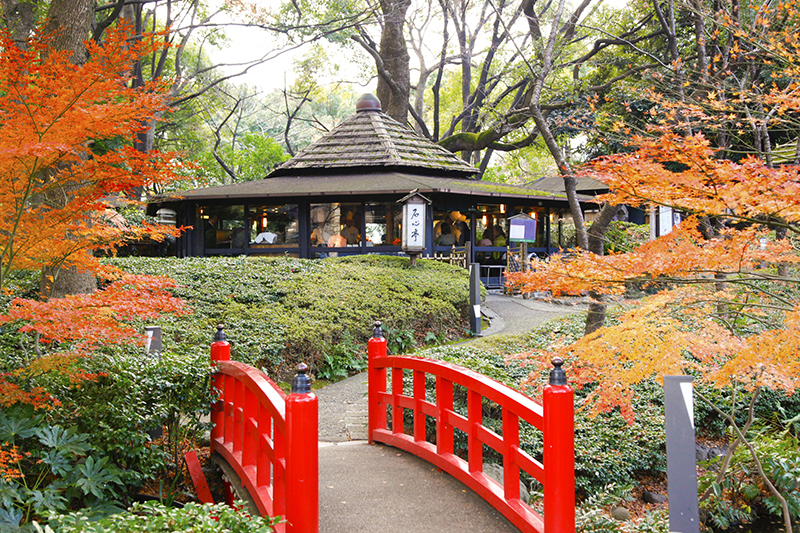
HOTEL NEW OTANI TOKYO
Tips for best results
Ota said people can tell wagyu from other beef from around the world by its sashi (fat marbling) and fine fatty meat in between. “That is why it’s moist, tender, tasty and sweet,” he said.
According to Ota, the hotels consider many things when cooking wagyu. One is that the chefs calculate backward to determine the best timing for the meat to be served. In this way, they adjust the period of time between slaughter and serving, using this method to keep inventory.
“If the meat is served immediately after slaughter, it is too young and tastes watery and the flavor has not yet developed,” Ota said “We often say ‘It’s young,’ which means it’s too early. We leave the meat to mature for a certain period of time so that the flavor will develop,” he said.
Second, the hotel chefs are particular about choosing female or castrated meat.
“While male meats are muscular and hard, female meats are softer and have more unsaturated fatty acids with a lower melting point compared with male meat,” he said. Thus, female meat is finely textured and when one eats it, one will find it totally different from that of the male.”
Third, they must look at the state of the meat, which includes the marbling and the color, which is important. “The meat in its early stage is bright red, and its redness becomes slightly dull as time passes. The latter is better,” Ota said.
At the Hotel New Otani Tokyo, the dishes are served after taking all of these points into consideration. Sekishin-tei is a relaxing restaurant with counter-style seating nestled within a 400-year-old Japanese garden, boasting a mixture of Japanese, Western and Chinese-style cuisine grilled right in front of the guests. A variety of wagyu brands including Kobe beef are offered a la carte or as an upgrade to course menus.
Additionally, at Taikan En, its Shanghai-style seasonal course (until Nov. 30) includes dishes such as braised beef and chestnuts, and steamed soup with beef.
Last but not least, hashed wagyu on a chicken rice omelet and Satsuki’s burger beef patty are regular items at Satsuki, allowing guests to savor wagyu at any time of day.
The hotel also holds beef fairs several times a year to feature brands from all over Japan. One such fair was held at six of the hotel’s restaurants from Sept. 1 until Oct. 31, featuring Iwate Prefecture’s shorthorn beef. Their menus included omelet rice, pasta, shoga-yaki (fried with ginger), steak and other items. One unique Chinese dish was a rich, spicy Iwate shorthorn beef yakisoba (stir-fried noodles) made with black miso and served with crispy baked Zemb noodles made from 100% yellow peas — served at Taikan En.
“By holding fairs like this, we can use the meat without any waste. I think we are one of the few places (in Tokyo) that offer such a variety of beef, especially wagyu. Not just steak and teppanyaki … We want people to know that there are various genres of cuisine. We want people from all over the world to come to our restaurants and enjoy a wide variety of wagyu,” he said.
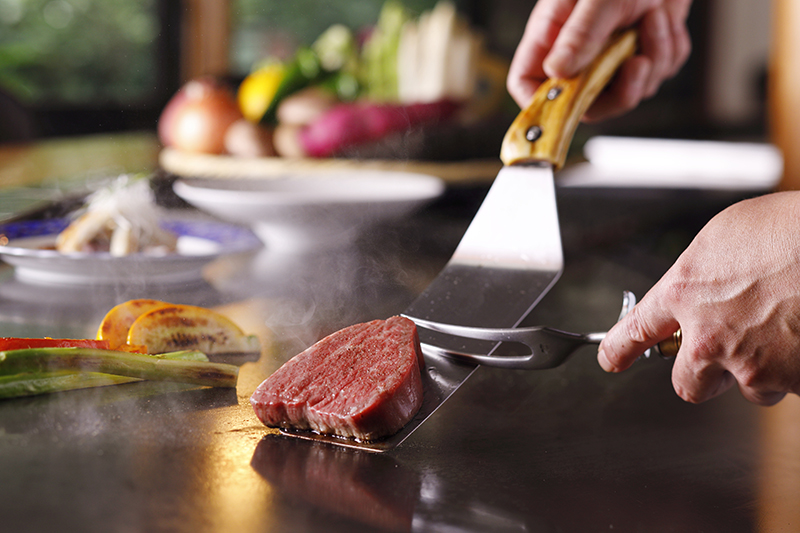
HOTEL NEW OTANI TOKYO



